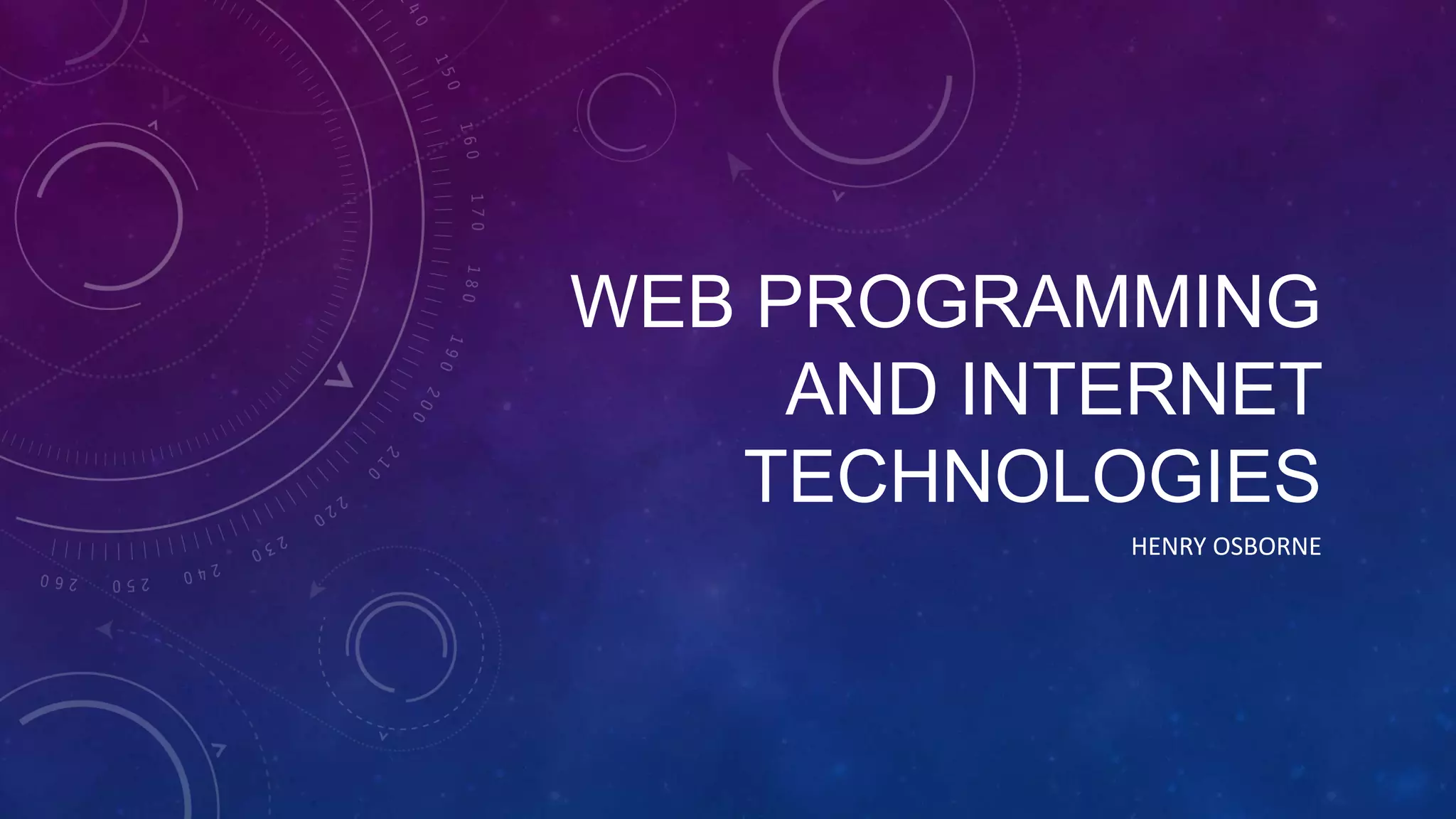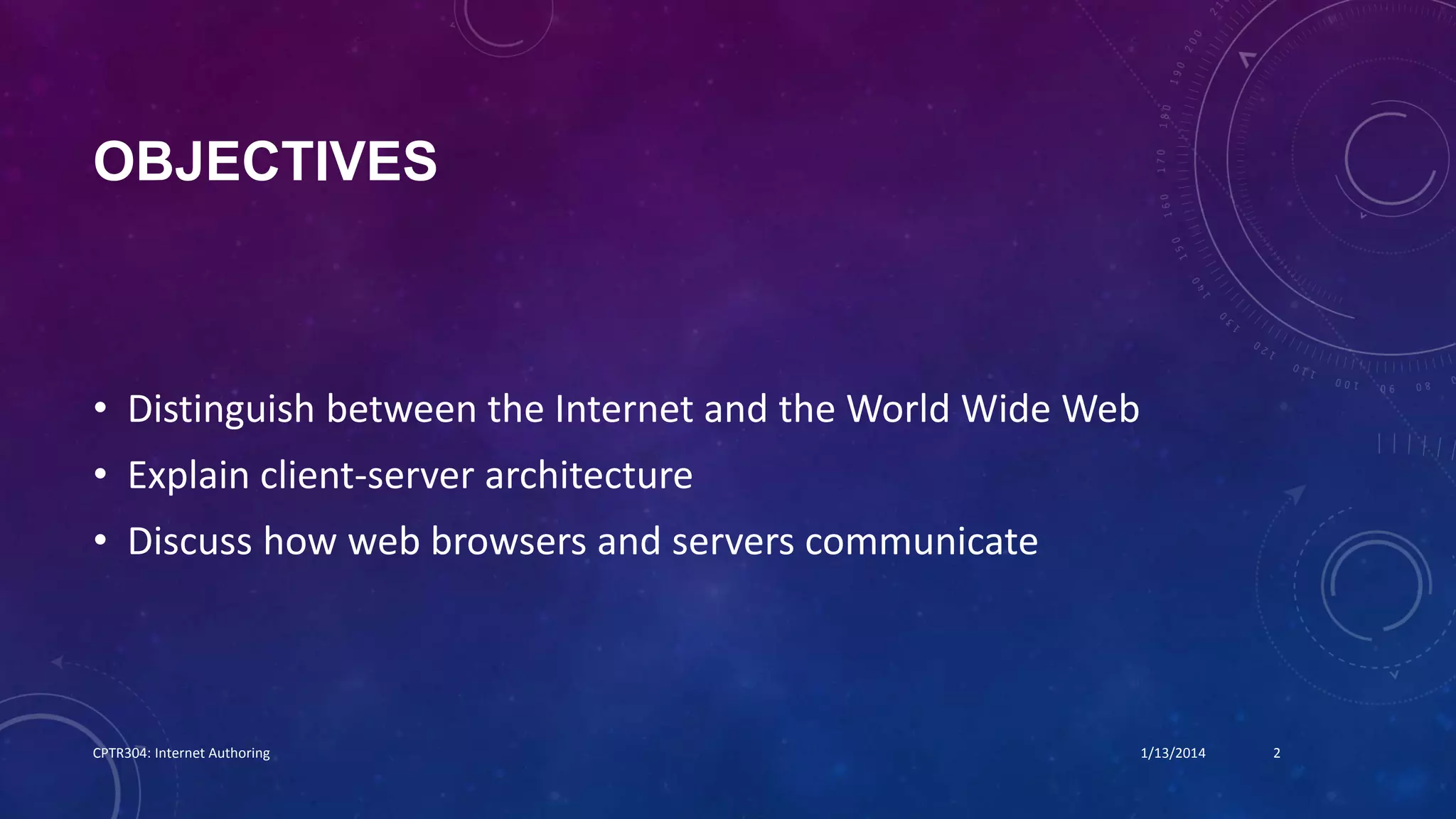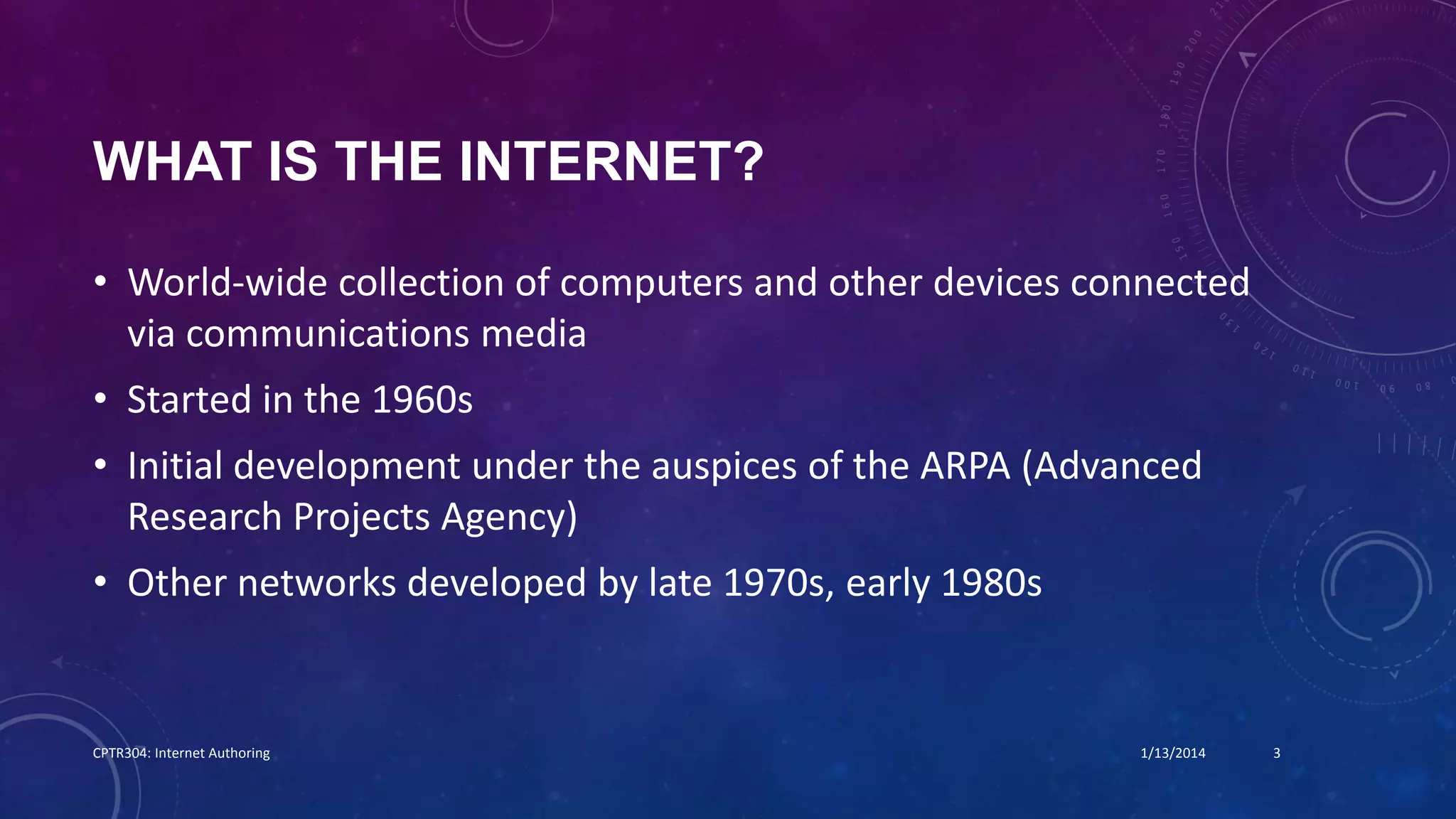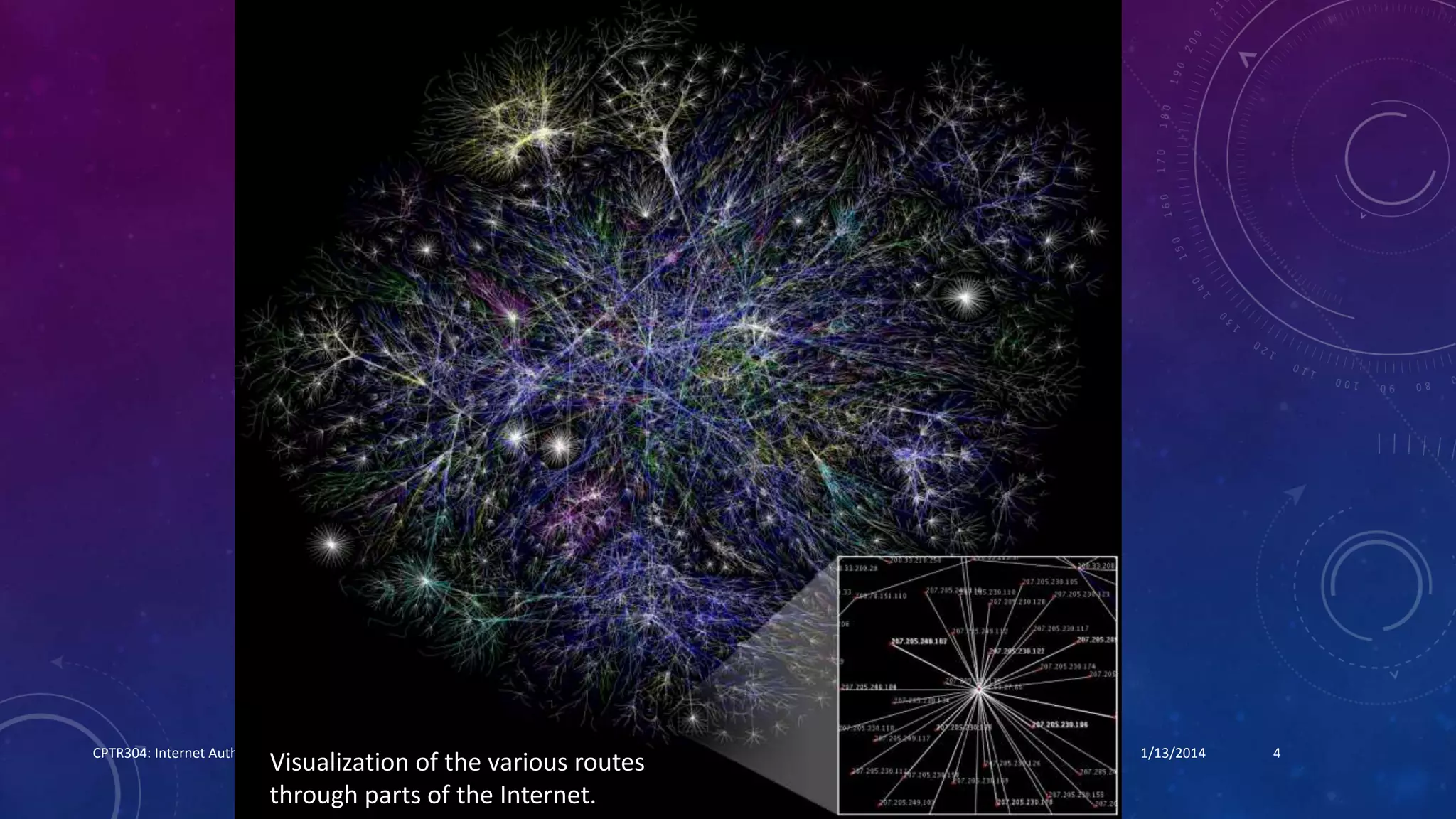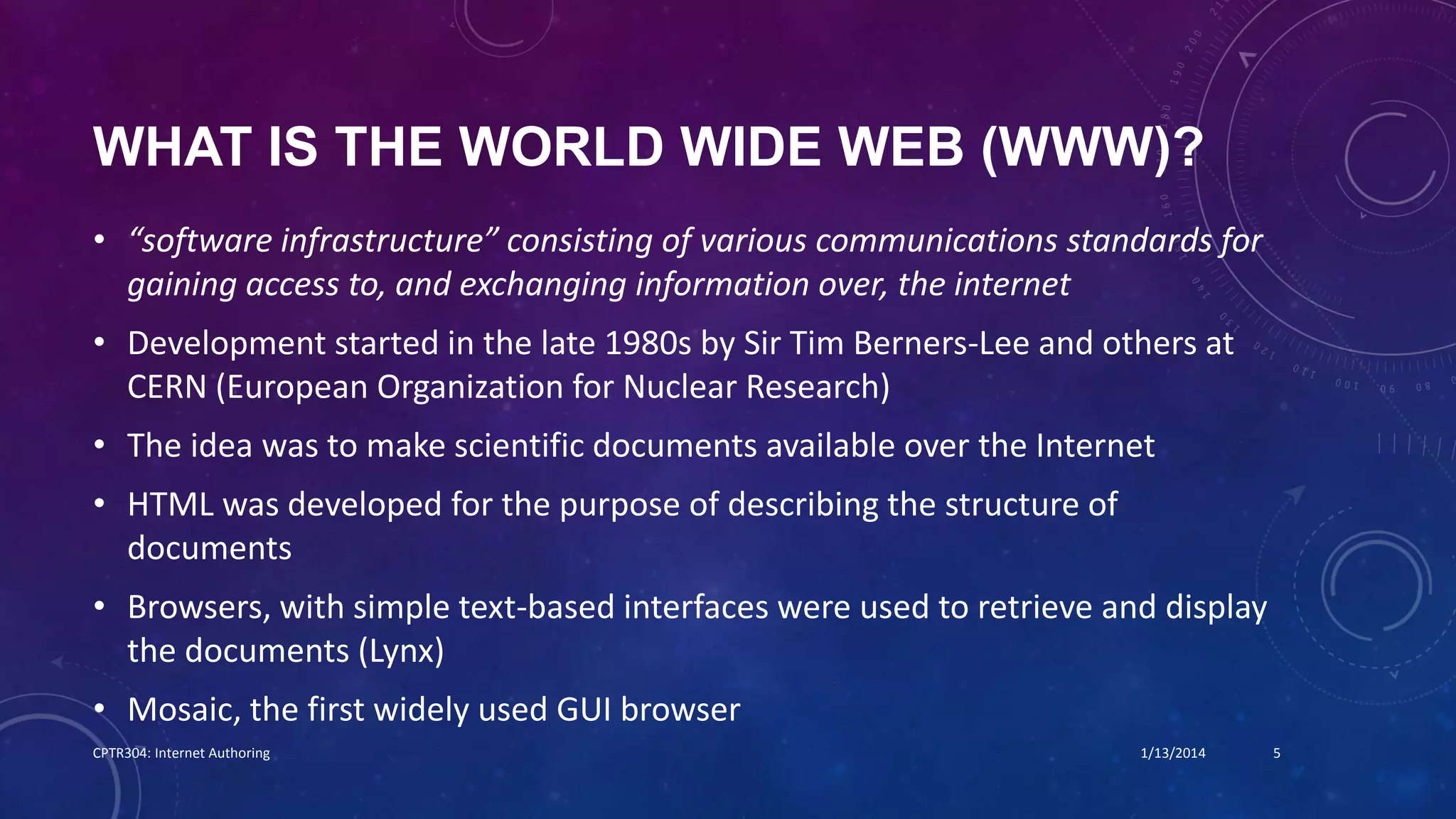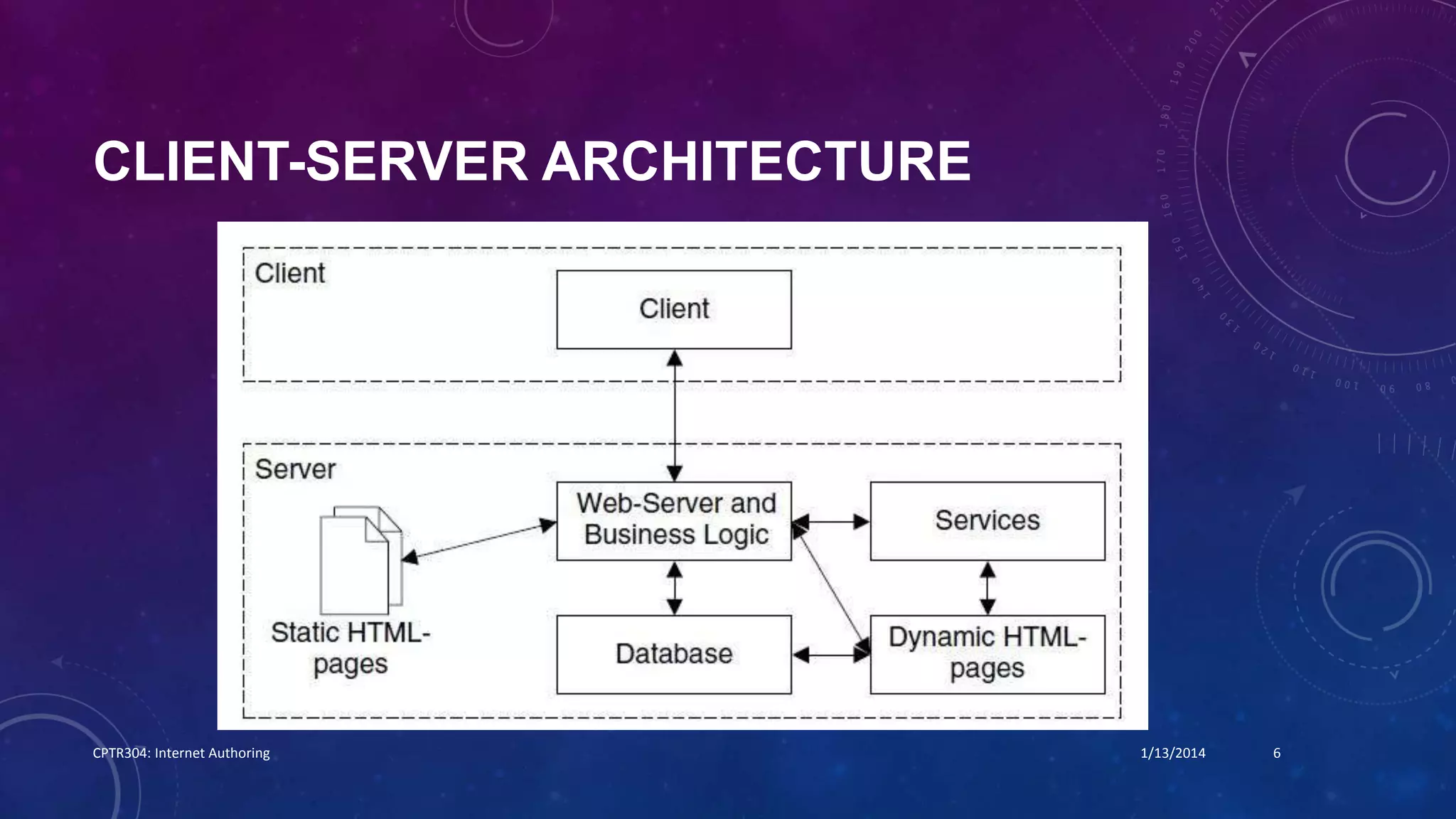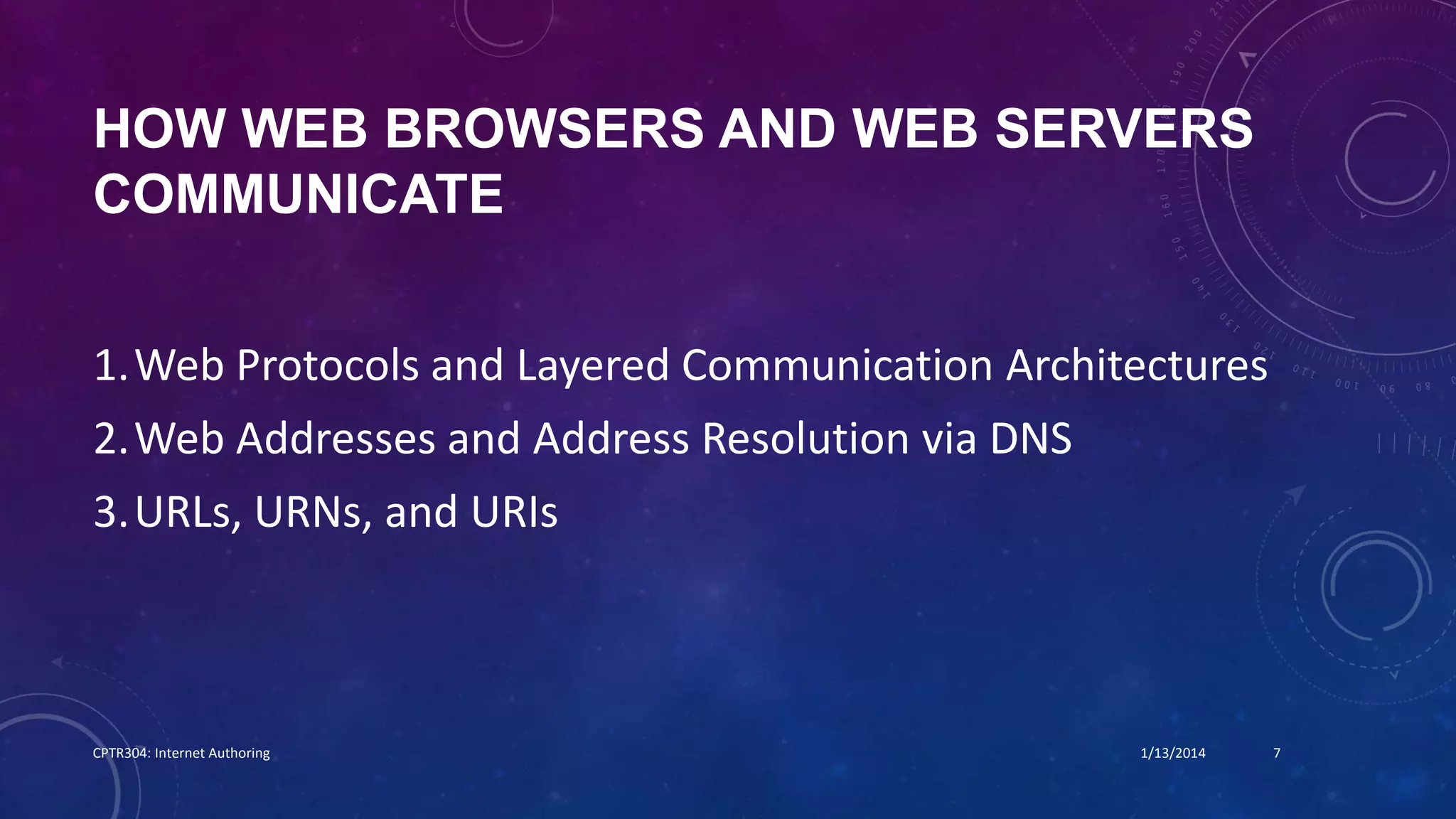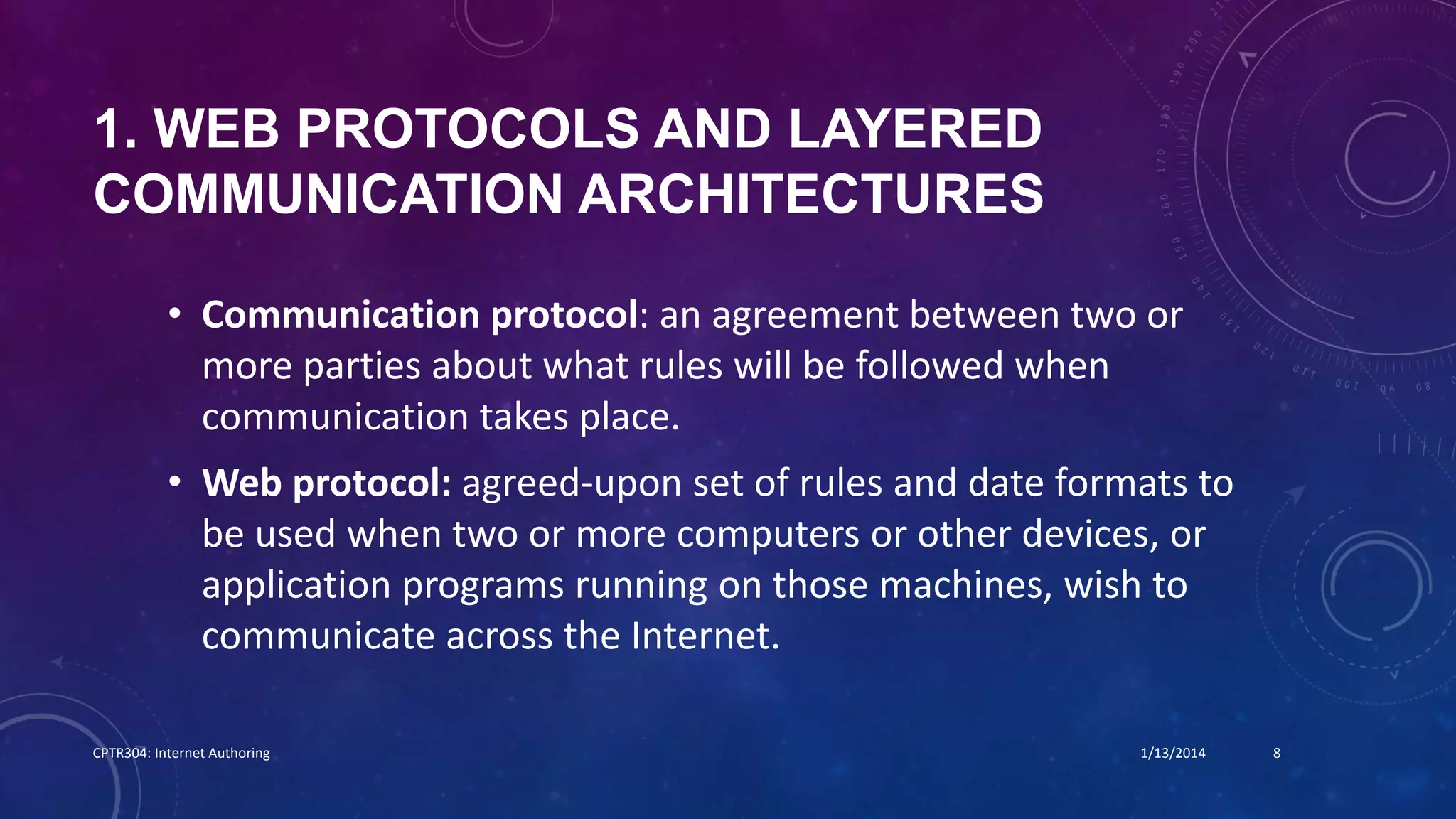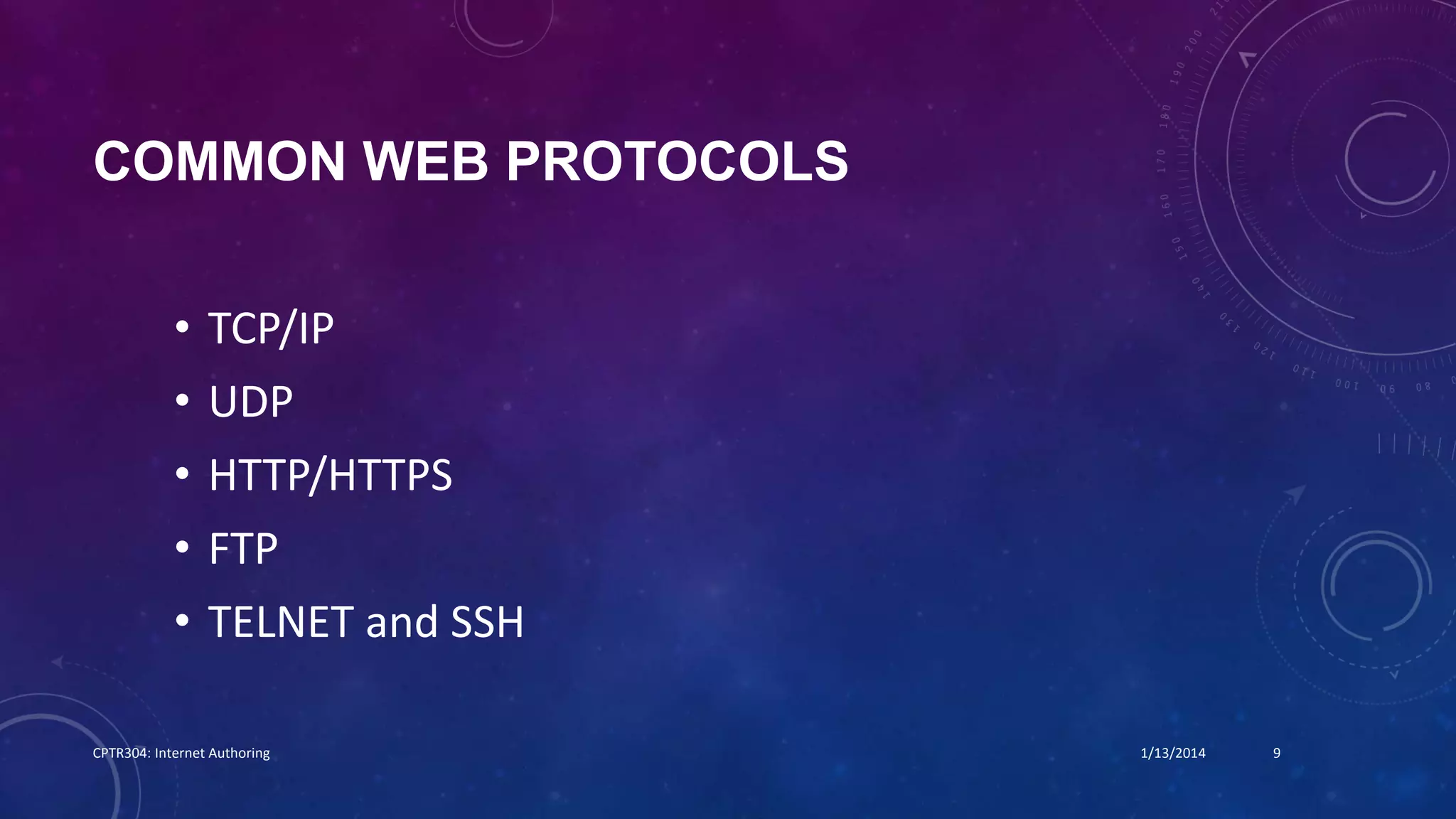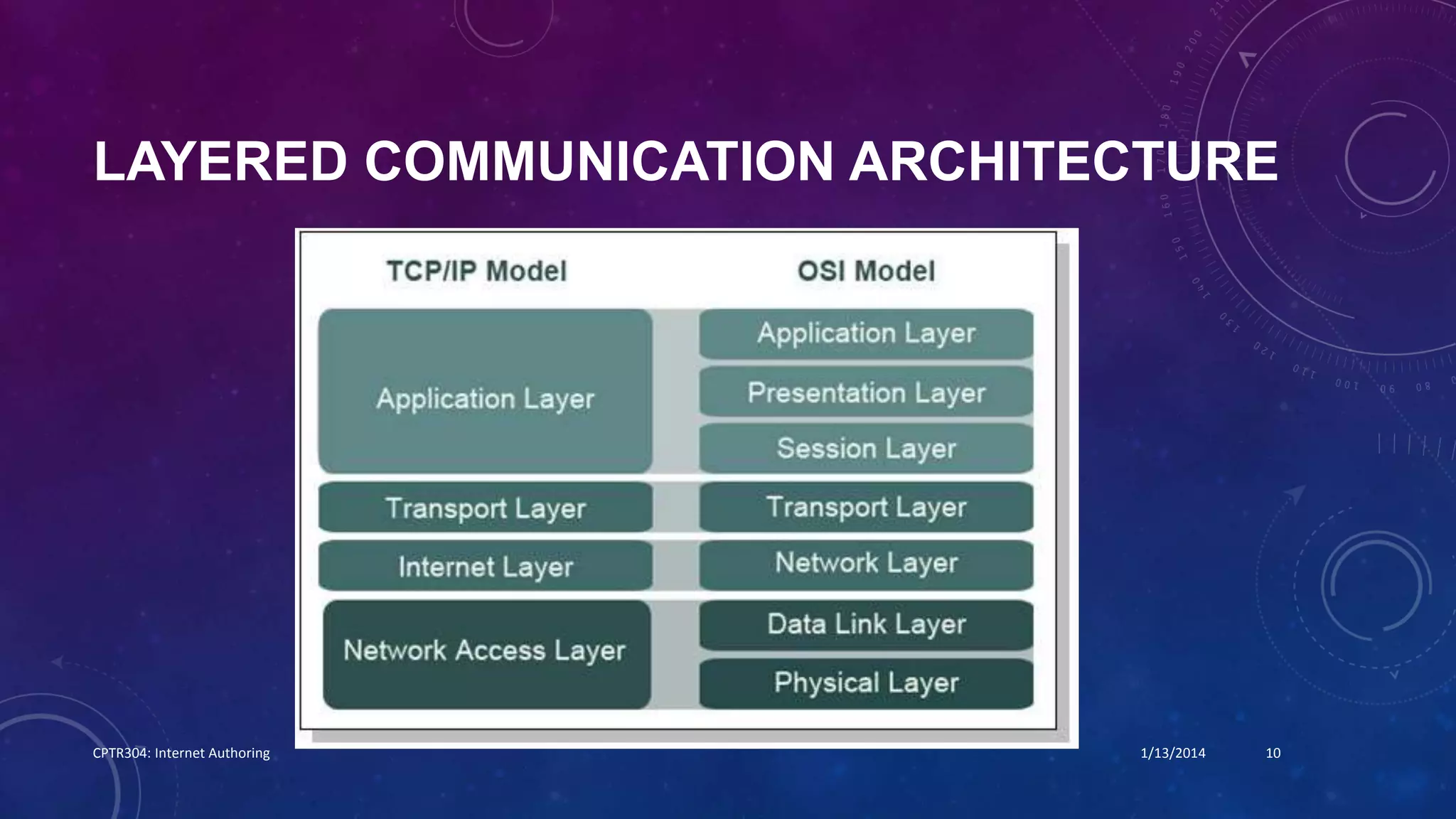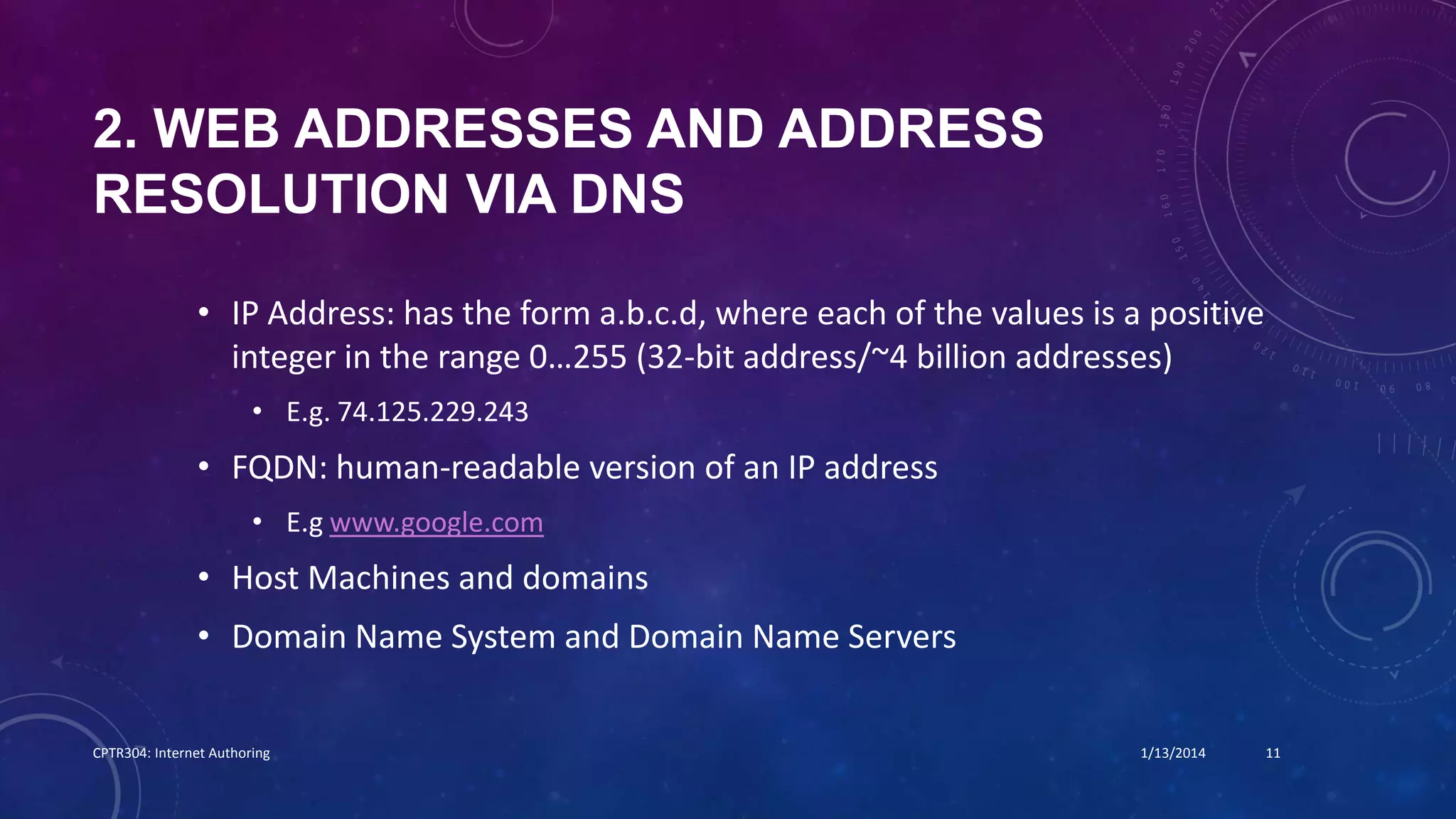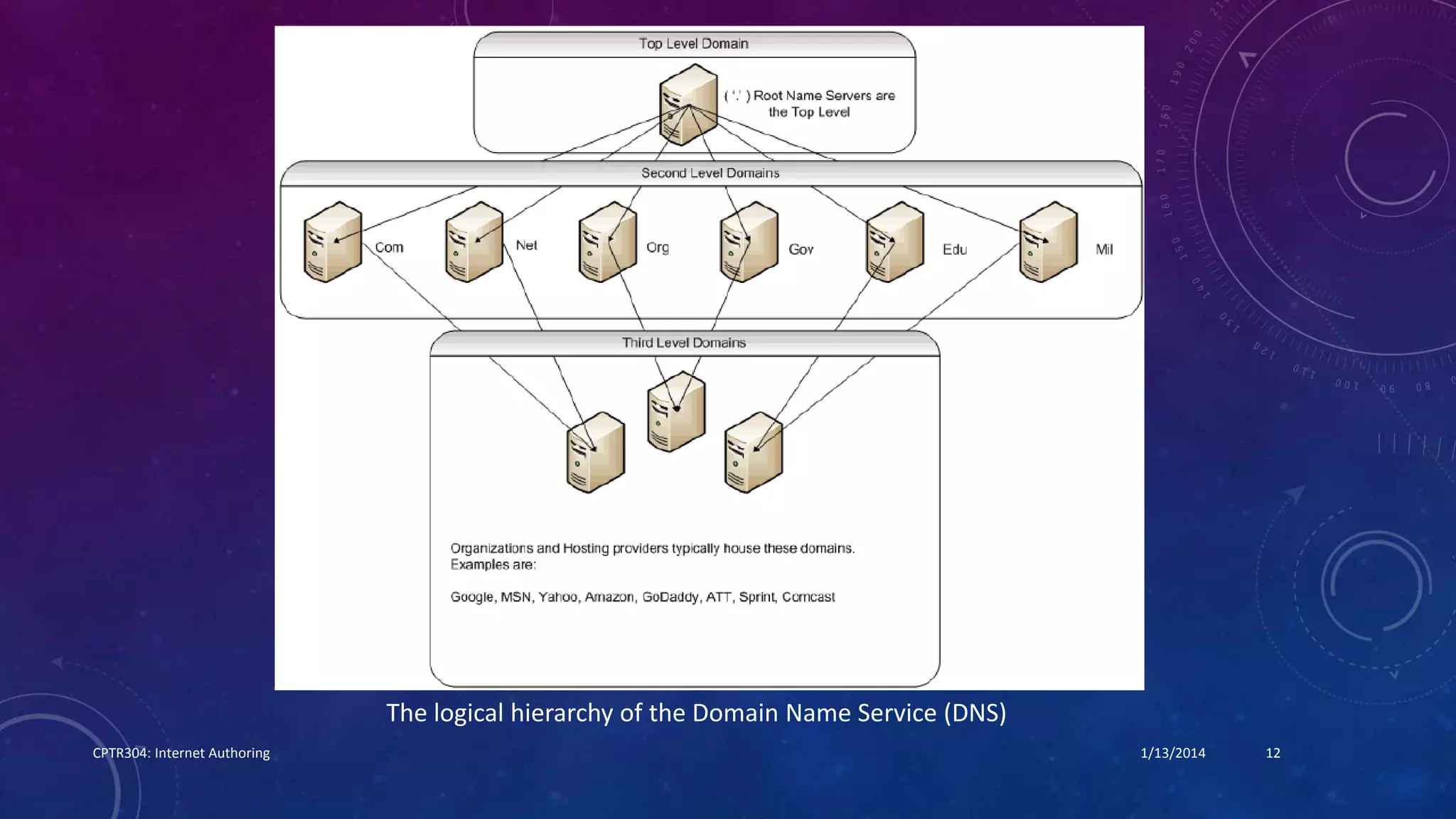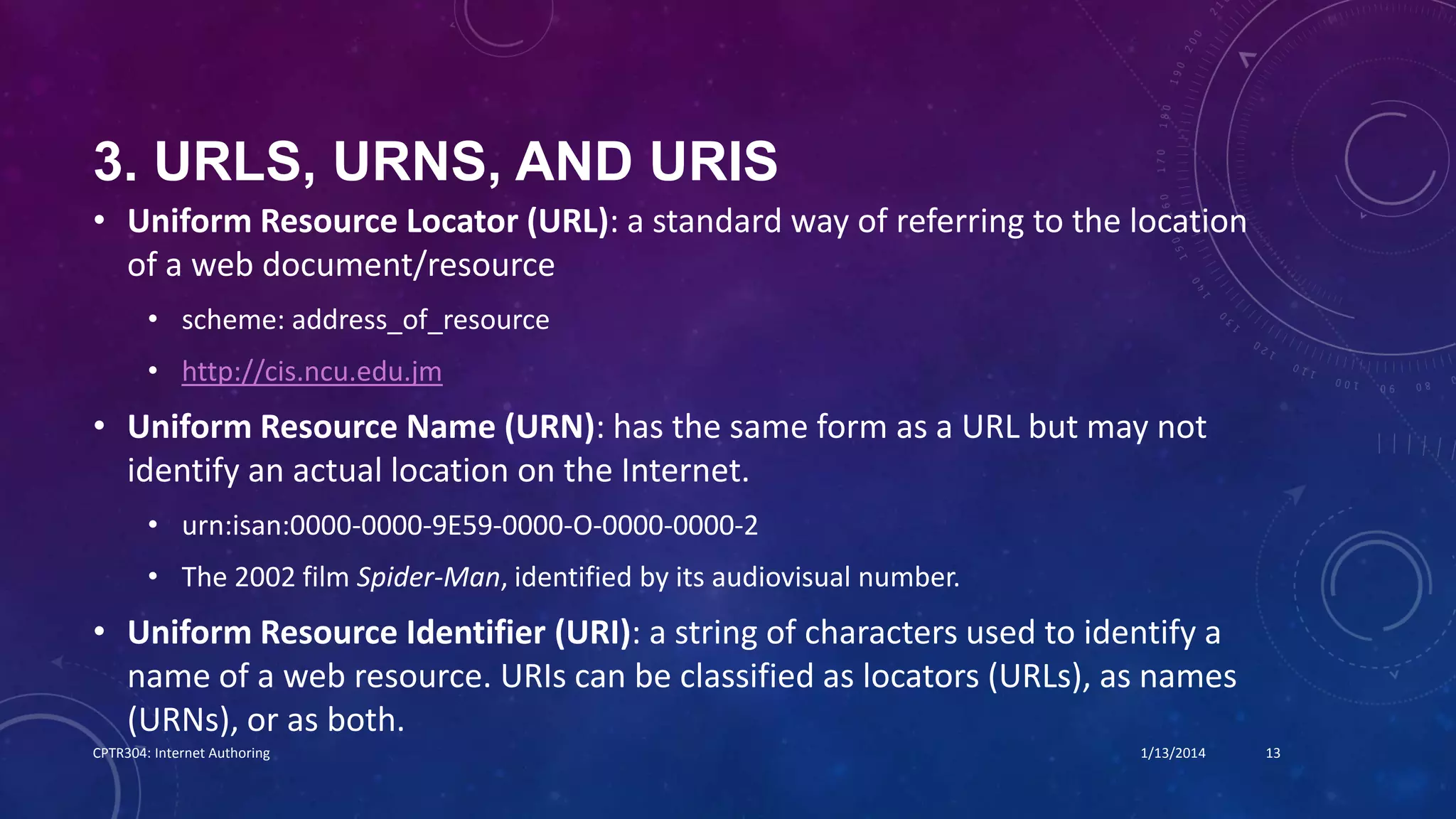This document discusses web programming and internet technologies. It distinguishes between the Internet, which is a worldwide collection of connected computers and devices, and the World Wide Web, which is a software system for accessing and sharing information over the Internet. The document explains how the client-server model and protocols like HTTP allow web browsers and servers to communicate and share web pages and other resources identified by URLs.
